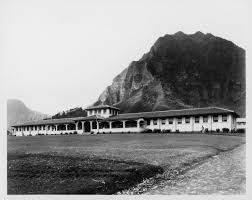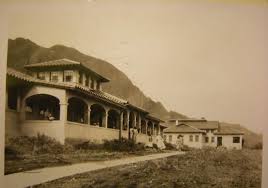Waugh's Holistic Wellness Center
1110 Nuuanu Ave #1058
Honolulu, HI 96817
(808) 353-4428 Ex 1059
Email: mywhwc@gmail.com
Founded: In 1850, Kamehameha III proclaimed Honolulu the capital city of the independent Kingdom of Hawaii. Under US control, the county of Oahu was established on July 1, 1905. Two years later, it was renamed the city and county of Honolulu. A city charter was adopted when Hawaii became a state in 1959.
A History of Mental Health in Hawaii:
Oahu Insane Asylum, Territorial Hospital, Hawaii State Hospital
The present Hawaii State Hospital is an important part of the latest manifestation of the evolving system of mental health care in Hawaii. For over 150 years, the Monarchy, Territory, and State of Hawaii have used various methods and treatments on the mentally ill. Imprisonment gave way to custodial care that advanced to various therapeutics, which moved in and out of vogue. The present State Hospital site dates from 1930, when it was opened with a transfer of patients from the insane asylum. The hospital campus was originally a cohesive grouping with its main buildings designed in the Spanish Mission Revival Style. Most of those buildings that remain are now administrated by Windward Community College.
Historical Context As a building type, mental hospitals were a relatively new architectural program. While hospitals have been constructed since ancient times, there were no buildings specifically built to treat the mentally ill until the end of the eighteenth century, with the insane placed in prisons or poor houses prior to that time. In France, Phillippe Pinel advocated moral treatment of the insane based on humanitarian ideals, and in 1793, removed the chains from the mentally ill in the Bicetre in Paris. At the same time in England, William Tuke began treating the insane in a similar manner and advocated that asylums be built in bucolic environments to aid in a person’s recovery. His York Retreat became a prototype emulated decades later in the United States.
In the 1840s, Dorothea Dix became a strong advocate for the humane treatment of the mentally ill in America, and Dr. Thomas Story Kirkbride (1809-1883), the superintendent of Pennsylvania Hospital for the Insane, incorporated such ideals into mental hospital design. Dr. Kirkbride was one of the thirteen founding members of the Association of Medical Superintendents of American Institutions for the Insane (AMSAII), the forerunner of the American Psychiatric Association. He served first as secretary, then later as president of this organization. Through this association and in his writings, Kirkbride promoted a standardized method of asylum construction and mental health treatment, popularly known as the Kirkbride Plan, which significantly influenced the entire American asylum community during his lifetime. He built on Pinel and Tuke’s ideas of moral treatment, and the positive role buildings and grounds played in the treatment of the insane. The institutions he proposed were placed on extensive grounds with cultivated parks and farmland, with the patients housed in one large masonry building with a central administrative core flanked by separate wings for men and women. Various illnesses were separated by floors, with the more excited patients placed on lower floors and the quieter patients on upper floors. Sunlight and fresh air were important elements in designing the building, and patients were housed in private rooms rather than wards. Patients were encouraged to help work the farms and keep the grounds, as well as participate in other chores. Such structured occupation was meant to provide a sense of purpose and responsibility, which it was believed would help regulate the mind as well as improve physical fitness. Patients were also encouraged to take part in recreations, games, and entertainments, which would also engage their minds, make their stay more pleasant, and perhaps help foster and maintain social skills.
Mental illness in Hawaii was handled as if it were a crime until 1866, with incarceration. Up until that year, persons in Honolulu who were deemed insane were remanded to Oahu Prison. They were considered dangerous and prison served to keep them out of the public. By the early 1860s in Hawaii, the government was beginning to take a different view, that the mentally ill needed a place where they could be cared for. In 1862 funds were appropriated for a facility and in 1865 the Kingdom of Hawaii purchased a house and lot in upper Kapalama for $3,500 from the Widemann family as the site for an insane asylum. The lot was between Kunawai Spring and another unnamed spring and was boggy during heavy rain. An additional $12,500 was appropriated for contractor H.C. Heuck to construct the asylum, a second building for more severely disturbed patients, fencing, furnishings, and grounds work.4 The asylum was completed by late 1866. It was located on what would become School Street, at the north corner of its intersection with Lanakila Avenue. Before School Street was built, the asylum was accessed from King Street by Asylum Road, which would later become Palama Street.
In the 1840s, Dorothea Dix became a strong advocate for the humane treatment of the mentally ill in America, and Dr. Thomas Story Kirkbride (1809-1883), the superintendent of Pennsylvania Hospital for the Insane, incorporated such ideals into mental hospital design. Dr. Kirkbride was one of the thirteen founding members of the Association of Medical Superintendents of American Institutions for the Insane (AMSAII), the forerunner of the American Psychiatric Association. He served first as secretary, then later as president of this organization. Through this association and in his writings, Kirkbride promoted a standardized method of asylum construction and mental health treatment, popularly known as the Kirkbride Plan, which significantly influenced the entire American asylum community during his lifetime. He built on Pinel and Tuke’s ideas of moral treatment, and the positive role buildings and grounds played in the treatment of the insane. The institutions he proposed were placed on extensive grounds with cultivated parks and farmland, with the patients housed in one large masonry building with a central administrative core flanked by separate wings for men and women. Various illnesses were separated by floors, with the more excited patients placed on lower floors and the quieter patients on upper floors. Sunlight and fresh air were important elements in designing the building, and patients were housed in private rooms rather than wards. Patients were encouraged to help work the farms and keep the grounds, as well as participate in other chores. Such structured occupation was meant to provide a sense of purpose and responsibility, which it was believed would help regulate the mind as well as improve physical fitness. Patients were also encouraged to take part in recreations, games, and entertainments, which would also engage their minds, make their stay more pleasant, and perhaps help foster and maintain social skills.
Mental illness in Hawaii was handled as if it were a crime until 1866, with incarceration. Up until that year, persons in Honolulu who were deemed insane were remanded to Oahu Prison. They were considered dangerous and prison served to keep them out of the public. By the early 1860s in Hawaii, the government was beginning to take a different view, that the mentally ill needed a place where they could be cared for. In 1862 funds were appropriated for a facility and in 1865 the Kingdom of Hawaii purchased a house and lot in upper Kapalama for $3,500 from the Widemann family as the site for an insane asylum. The lot was between Kunawai Spring and another unnamed spring and was boggy during heavy rain. An additional $12,500 was appropriated for contractor H.C. Heuck to construct the asylum, a second building for more severely disturbed patients, fencing, furnishings, and grounds work.4 The asylum was completed by late 1866. It was located on what would become School Street, at the north corner of its intersection with Lanakila Avenue. Before School Street was built, the asylum was accessed from King Street by Asylum Road, which would later become Palama Street.
Context Study for the Hawaii State Hospital DAGS Job No. 12-20-2701





